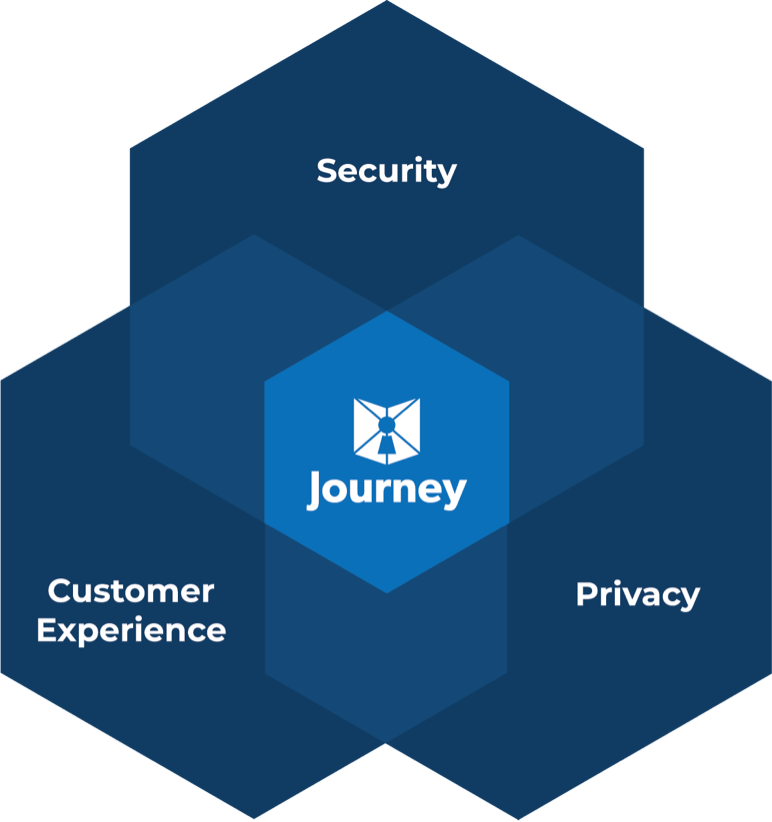Financial services leaders have grappled with the challenges of establishing trusted identity in the digital world. Most financial institutions rely in one way or another on knowledge-based authentication, and many are now stepping up their game with multi-factor authentication. But did you know there’s an easier, more secure way to handle trusted identity? Read on to learn about how biometrics are changing the face of modern banking operations.
Importance of Trusted Identity in Banking
When a customer is setting up and managing a bank account, it’s important for a myriad of reasons that the bank knows for certain they are who they say they are. If someone hacks into a Netflix account, the worst that happens is someone gets to watch a few free episodes of Queer Eye or Tiger King. But if a hacker finds its way into a bank account, the consequences for the customer and the bank could be devastating.
Banks have to use multiple forms of identity authentication before a customer can take action with their bank account. In person, this may mean showing multiple forms of photo identification or creating PIN numbers. In online banking, financial institutions may use Know Your Customer (KYC) methods.
KYC Methods Are Mandatory But There’s a Better Way
KYC security is mandated by federal regulations for banks use to verify that their customers are who they say they are when they create a new account, and then update it on a regular basis. This system may include government issued ID, security questions, PIN numbers, passwords, and CAPTCHA checks to make sure a bot isn’t hacking into an account. Then, for everyday authentication, most banks resort to usernames, passwords, and sometimes MFA. But the problem is KBA methods are very easy to circumvent, and customers hate them. KYC, KBA and MFA are tedious and customers can drop out of the process, causing the business to lose new customers.
Customers want to be able to access and manage their money when and how they need to. They don’t want to have to jump through a million hoops, try to remember the right answer to security questions. Nor do they want to dig out the PIN number they jotted down on the back of their lunch receipt two years ago.
Many people are resigned to jumping through these hoops, but what would it mean to your customer experience and your operations if you could collapse those steps in a way that is far more secure, but also far faster and simpler? You’d be a hero to your customer, and they would not be tempted to use other financial institutions.
Why KBA Methods Cost Your Bank
KYC is mandatory, legally speaking. But customers do find it annoying and using KBA methods for future authentication are time-consuming and may be taking up a lot of your resources (password resets, anyone?). If you can simultaneously strengthen your security posture and make your onboarding experience smooth and fast, you’ll have a much lower abandon rate and your customer retention rates will go up.
How Most Customers Interact Today
These days, however, nearly all banking transactions are handled digitally.
Many customers handle most of their banking from their smartphones. They can check their balance, transfer money, and even deposit checks. This sort of banking on the go makes money management easier than ever, and it creates an opportunity for you to reinvent your onboarding/enrollment and every day authentication processes. Using biometrics, the powerful sensors on smart phones and even the cameras on laptops can revolutionize the way you onboard customers in a fully KYC compliant fashion, and create a digital identity certification for all future authentications that can be up to 4 factors of authentication – ID verification, biometrics, shared secrets, and location. All of this with almost no friction on your customer…plus it collapses your risk to insider attacks and synthetic fraud.
Manage Risks
You’ll still have to comply with KYC onboarding, but you can supercharge your processes and compliance with biometric identification, one of the most secure options currently on the market. Any hacker can figure out a password given enough time and resources. But no one can replicate a fingerprint or a face scan perfectly. Your risk of security breaches drops significantly when you rely on biometric forms of ID.
An innovative startup called Journey has taken this to the next level by creating a “zero knowledge” network, which means that the information is verified but never shown to an agent, providing an additional layer of security and privacy. This means that no agent ever sees your customer’s private identifying information, taking the risk out of work from home agents or outsourcers. They only know whether it matched the computer records or not.
With KYC methods, bank employees may be looking at a customer’s address, height, weight, and age, among other things. With biometrics, all that stays private.
Improve the Customer Experience
Not only are biometrics great for your behind the scenes needs, but your customers will love it. Customers don’t want to spend time digging out their ID cards or trying to remember PIN numbers. Biometric identification is inherent to who they are and so is completely intuitive.
Best of all, biometric ID technology is likely already at your customers’ fingertips. Most smartphones today come equipped with fingerprint scanners or facial recognition technology. Your bank will just be utilizing tools already in your customers’ hands to improve their experience.
Discover New Methods for Establishing Trusted Identity
Establishing a trusted identity is important when handling financial transactions. But traditional KYC methods are clunky, expensive, inefficient, and insecure. New biometric methods can keep customer information secure while streamlining your operation and improving your customer experience.
If you’d like to discover the future of trusted identity technology, check out the rest of our site at Journey. We’re the trusted identity platform for companies looking to upgrade their security. Check out our solutions today and start providing a better experience for your customers today.



